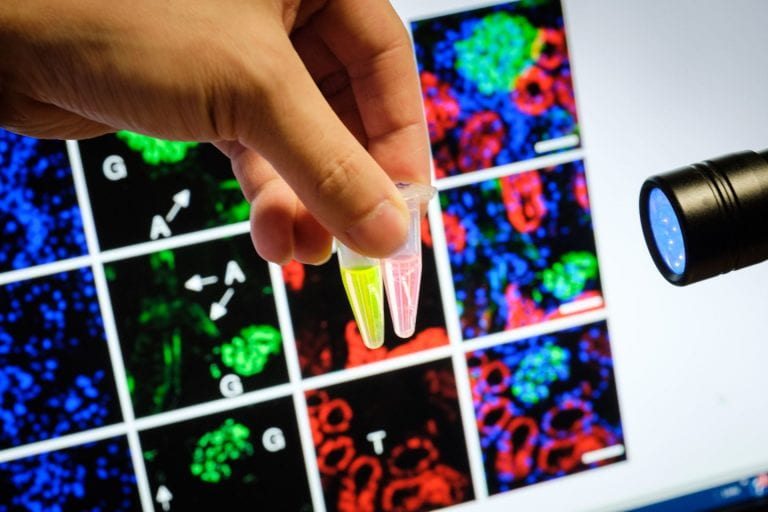Detecting kidney failure before damage is done
NTU researchers develop molecular imaging probes that detect early-stage molecular and cellular changes in the kidneys in real time.
 Molecular imaging probes engineered to emit near-infrared fluorescent or chemiluminescent light when reacting with biomarkers indicative of acute kidney injury. Credit: NTU.
Molecular imaging probes engineered to emit near-infrared fluorescent or chemiluminescent light when reacting with biomarkers indicative of acute kidney injury. Credit: NTU.
An estimated 1.7 million people die yearly due to acute kidney failure, a condition where the kidneys stop working over hours or a few days.
About 25% of such cases are caused by the nephrotoxic effects of medicinal drugs, including certain chemotherapeutics and antibiotics, making close monitoring of kidney function during drug treatment essential for preventing adverse outcomes.
Current clinical diagnostic methods, however, measure relatively insensitive late-stage indicators of acute kidney injury. Thus, a research team led by Assoc Prof Pu Kanyi of NTU’s School of Chemical and Biomedical Engineering developed molecular imaging probes that can be used to detect early-stage molecular and cellular changes in the kidneys in real time.

Assoc Prof Pu Kanyi (bottom) and Dr Huang Jiaguo with the chemiluminescent nanoprobes. Credit: NTU.
Made up of three molecular building blocks with distinct functions, the probes were tested in mice that had been treated with nephrotoxic drugs. When the probes reacted with biomarkers related to oxidative stress or cell damage—signs of early-stage acute kidney injury— they emitted near-infrared fluorescent or chemiluminescent light, which was detected by optical imaging.
Unexpectedly, the optical signals could also be detected in the urine of treated mice, showing that both the molecular renal probes and biomarkers are excreted and interact directly in urine. The researchers now plan to integrate the nanoprobes into urine test strips, which can then be used in hospital intensive care units for the early detection of acute renal failure.














/enri-thumbnails/careeropportunities1f0caf1c-a12d-479c-be7c-3c04e085c617.tmb-mega-menu.jpg?Culture=en&sfvrsn=d7261e3b_1)

/cradle-thumbnails/research-capabilities1516d0ba63aa44f0b4ee77a8c05263b2.tmb-mega-menu.jpg?Culture=en&sfvrsn=1bc94f8_1)

7e6fdc03-9018-4d08-9a98-8a21acbc37ba.tmb-mega-menu.jpg?Culture=en&sfvrsn=7deaf618_1)

.tmb-listing.jpg?Culture=en&sfvrsn=3b74ec1c_1)
-(2).tmb-listing.jpg?Culture=en&sfvrsn=aa22bd90_1)
-and-the-coated-wood-(ntu-singapore).tmb-listing.jpg?Culture=en&sfvrsn=624bb80c_1)


